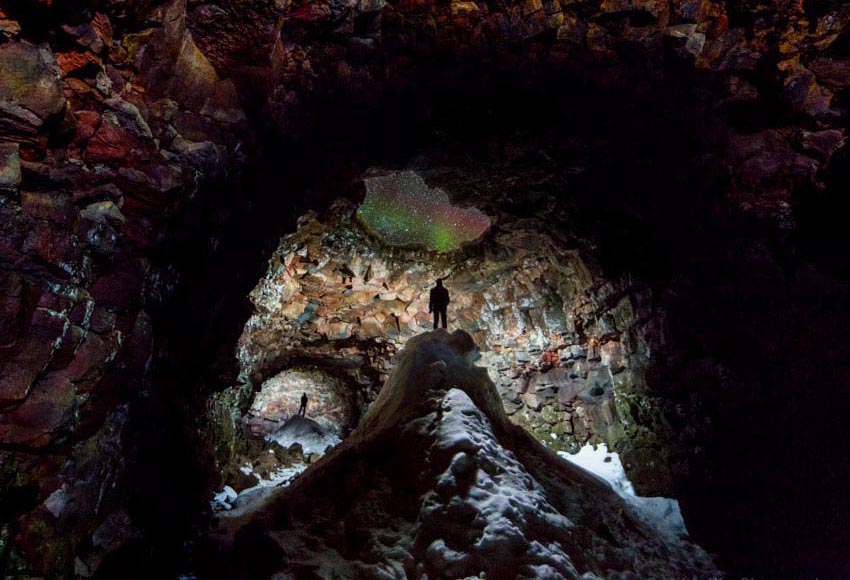CAVES

Cave with Aurora Skylight
NASA - July 22, 2014Yes, but have you ever seen aurora from a cave? To capture this fascinating juxtaposition between below and above, astrophotographer Bjargmundsson spent much of a night alone in the kilometer-long Raufarholshellir lava cave in Iceland during late March. There, he took separate images of three parts of the cave using a strobe for illumination. He also took a deep image of the sky to capture faint aurora, and digitally combined the four images later. The 4600-year old lava tube has several skylights under which stone rubble and snow have accumulated. The person standing on each mound - it's the artist.

"Walk" to the end of the pier.
Close your eyes.
Hold the negative afterimage in your thoughts.
What do you see?
You think of your life as a story. MRI studies show us that following a story - a narrative with a beginning, middle, and end - causes our brains to release cortisol and oxytocin. These chemicals give us the unique human ability to connect with someone - even a total stranger - and empathize. Stories are what we use to bring meaning to our lives.
Now imagine, for a moment, that we live without the understanding that our story must eventually end. What if our lives were as infinite as the universe, if the ticking clock never stopped. What would our story be then? Would we still love or care? Would those tiny fleeting moments that mean everything - mean anything at all?
It's all about perception ....

Midnight Sundogs - Spaceweather.com - July 22, 2014
Some of us have seen the midnight sun. Even more have witnessed sundogs. But have many people have seen a mashup of the two--the elusive midnight sundog? On July 21-22, Stine Bratteberg photographed the combo from Bleik, And¿ya, Norway: Sundogs, the rainbow-colored splashes of light on either side of the sun, are caused by sunlight striking ice crystals in the air. Plate-shaped crystals flutter down from the sky like leaves falling from trees. Aerodynamic forces align their flat sides parallel to the ground, and when sunlight hits a patch of well-aligned crystals at the right distance from the sun, voila! - a sundog. Bratteberg's photo also captured a faint midnight sun halo and a midnight upper tangent arc. You can see a lot of midnight atmospheric optics from the Arctic Circle. But not for much longer. As northern summer comes to an end, the midnight sun will fade and auroras will chase the sundogs into the darkening Arctic night.